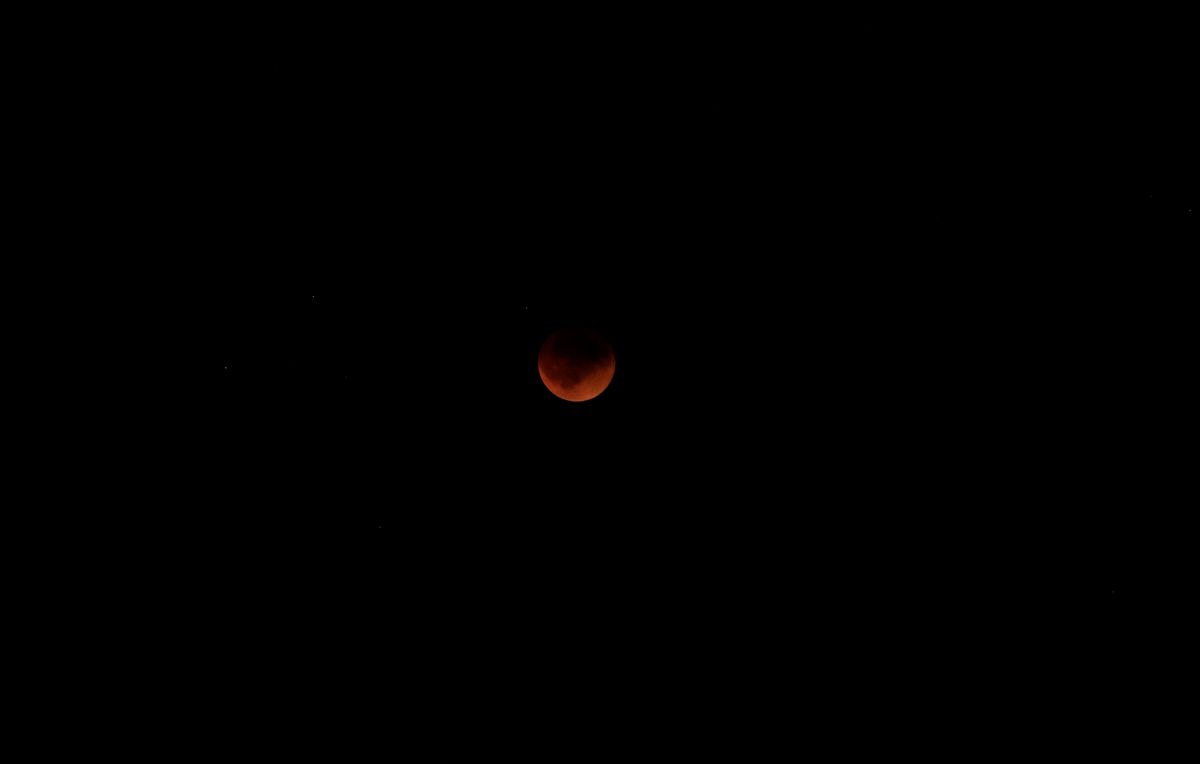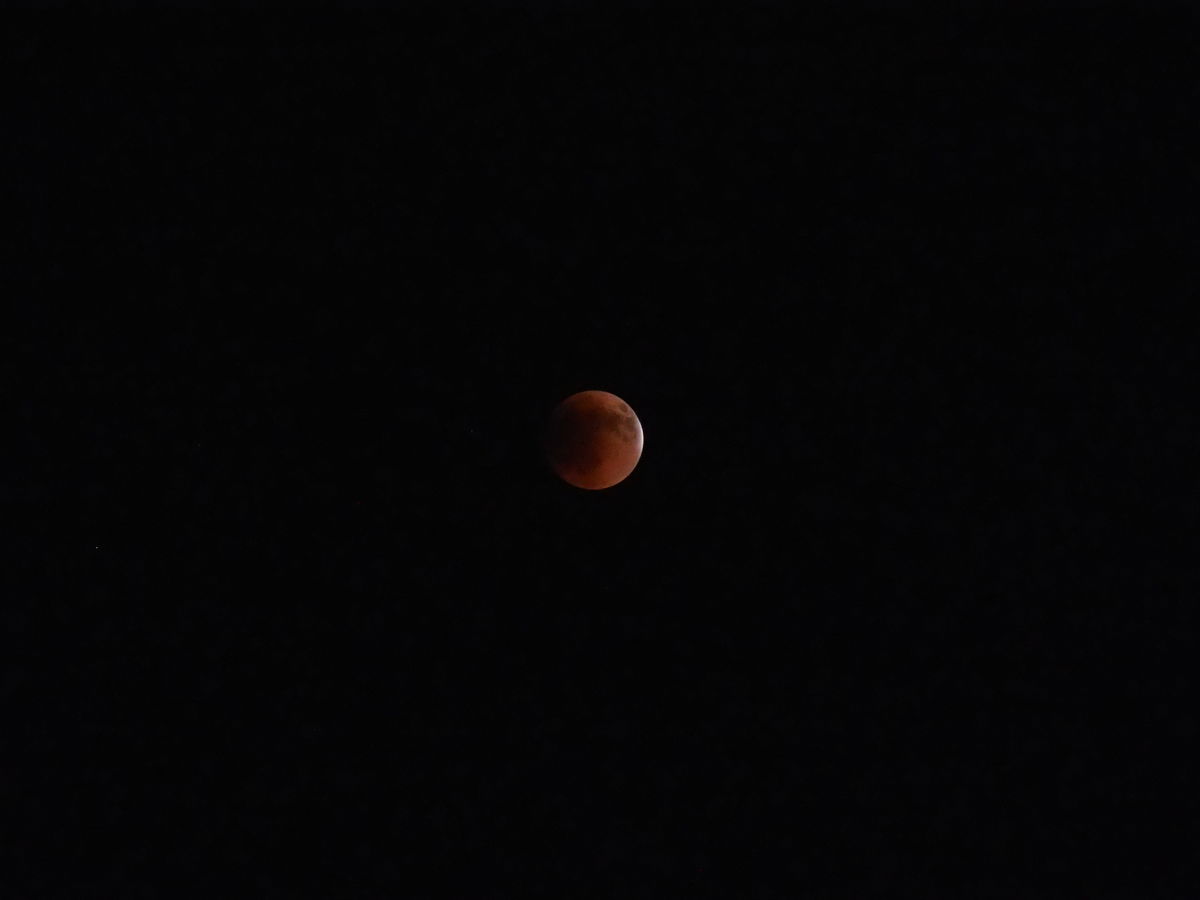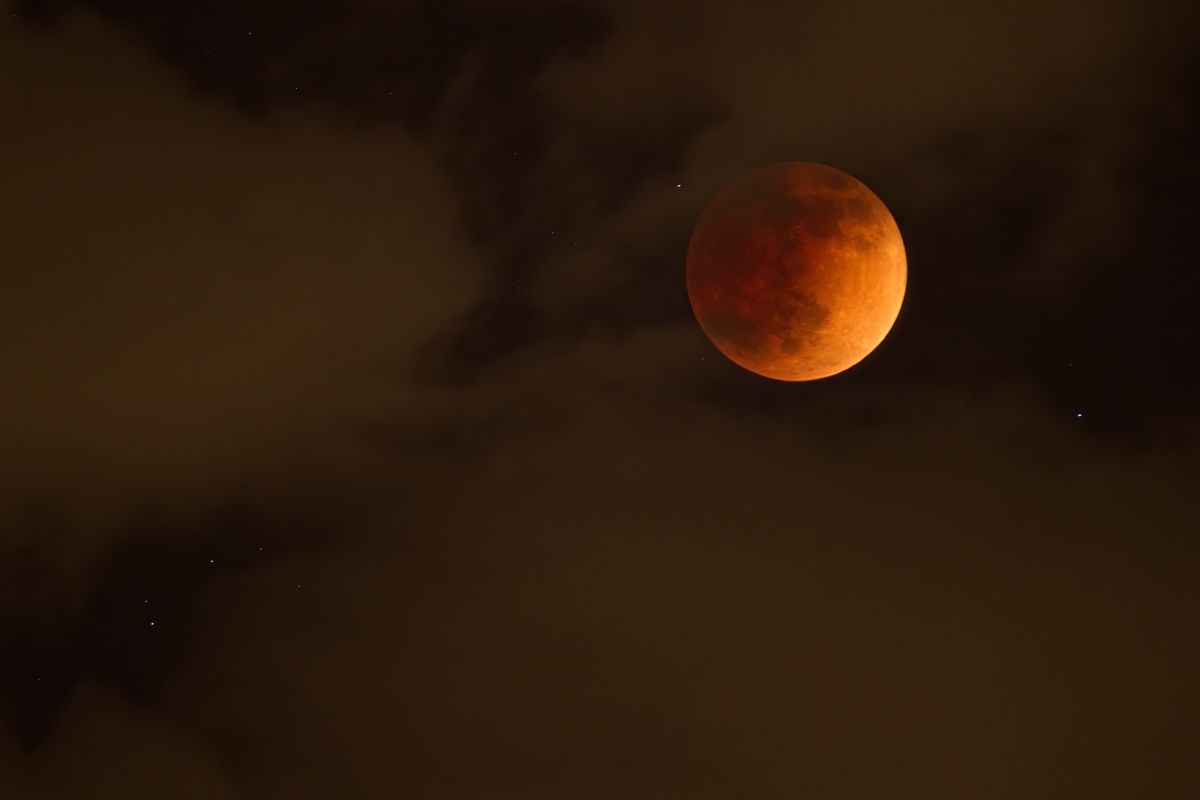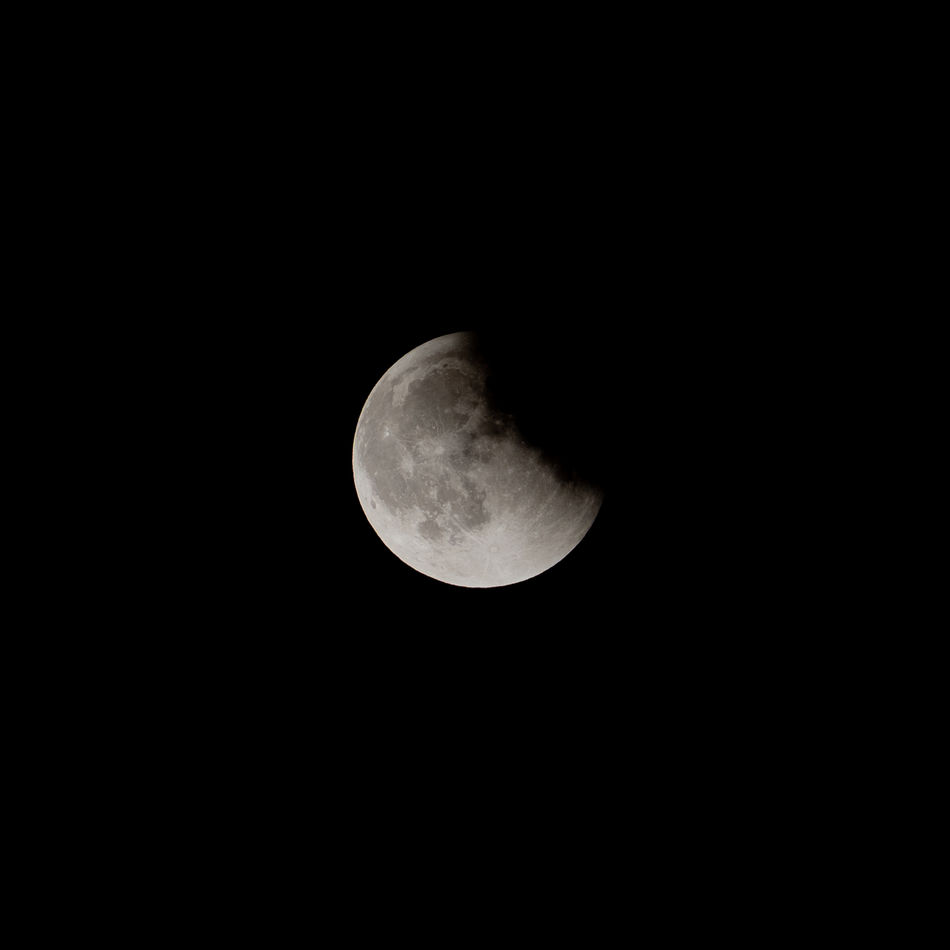View Finders - Mirrorless vs DLSR
May 16, 2022 12:07:00 #
Hello UHH community. I have recognized for some time that there is a lag in ability to take consecutive shots quickly with a mirrorless, due to the EVF. Generally, there are ways to work around that. Last night we had a total eclipse of the moon. On the “inbound” segment, I was using a mirrorless camera. As the eclipse got more complete, the EVF system could no longer support even finding the subject. As the eclipse was ending later on, I went back to my DLSR and there was no problem whatsoever in acquiring and taking the photos.
While I like the features of each, generally I use the DLSR (a Canon 5D Mk iv) for local use and road trips, and the smaller mirrorless for compactness while traveling. Now I see one more differentiator.
Have any of you experienced this issue with low light capability with the EVR in a mirrorless camera system? Would appreciate knowing if you have found ways to overcome this problem.
Thank you all. Jim R
While I like the features of each, generally I use the DLSR (a Canon 5D Mk iv) for local use and road trips, and the smaller mirrorless for compactness while traveling. Now I see one more differentiator.
Have any of you experienced this issue with low light capability with the EVR in a mirrorless camera system? Would appreciate knowing if you have found ways to overcome this problem.
Thank you all. Jim R
May 16, 2022 12:14:06 #
My workaround is to 'up' the ISO during focusing, then drop back down to shoot. But, I'm usually manual focusing with 1980s MF lenses and the 10x zoom display.
But, was that workaround above even necessary? Do you have your EVF configured to show the intended resulting image? If it looks dark / too dark in the viewfinder, what did the actual image look like? If you're getting different results from what you see as you compose, look at your camera settings, which are under the human's control.
But, was that workaround above even necessary? Do you have your EVF configured to show the intended resulting image? If it looks dark / too dark in the viewfinder, what did the actual image look like? If you're getting different results from what you see as you compose, look at your camera settings, which are under the human's control.
May 16, 2022 12:30:29 #
JimRPhoto wrote:
Hello UHH community. I have recognized for some t... (show quote)
The Z7 was perfect for the eclipse. The focus is dead on. The moon is very easy to locate and view. The IBIS allowed recording perfect pinpoint stars at 1/15 with an ancient handheld 200mm.
Your problems with EVF are beyond my imagination. Been using EVF for years.
Still have several SLRs for doorstops, except the 5D-SR does some special applications (but the Z7 does the very same jobs much easier).
May 16, 2022 12:50:49 #
I have a Z5, and have a lot of noise at night. My work-around is to switch the camera into movie mode for composition, then back to photo mode when I want to shoot.
I really wanted to test the autofocus last night with the eclipse -- but clouds got in the way :-(
I really wanted to test the autofocus last night with the eclipse -- but clouds got in the way :-(
May 16, 2022 13:12:23 #
r1ch
Loc: Colorado
JimRPhoto wrote:
Hello UHH community. I have recognized for some time that there is a lag in ability to take consecutive shots quickly with a mirrorless, due to the EVF. Generally, there are ways to work around that. Last night we had a total eclipse of the moon. On the “inbound” segment, I was using a mirrorless camera. As the eclipse got more complete, the EVF system could no longer support even finding the subject.
I have an R5. It is in exposure simulation mode (this is the key to be able to focus with evf at night) so the only reason I could not see the moon was if my exposure was so far off it darkened moon. I used manual focus, I zoomed in on the moon using digital zoom in the view finder. The problem I had was the wind was blowing my camera rather my lens around. IBIS and IS were not taking care of the vibration. I set my self timer for 10sec. It took that long for the camera to some degree stabilize. None of my shots were sharp because of camera movement. I tried upping the ISO and shutter speed only to get too much noise. This is the best image I got and you can see the stars are moving around and the image is not sharp. I should have spent more time shooting the moon before the blood moon with my R5 which is a fairly new camera to me to figure things out ahead of time. Because of all my problems, I panicked and made things worse and by the time I started seeing better results the clouds rolled in. I think Jim your problem with the mirrorless camera like me is you don't know your camera well enough. You know how to fix problems with your DSLR but not with your mirrorless.
May 16, 2022 13:28:30 #
r1ch
Loc: Colorado
User ID wrote:
The Z7 was perfect for the eclipse. The focus is dead on. The moon is very easy to locate and view. The IBIS allowed recording perfect pinpoint stars at 1/15 with an ancient handheld 200mm.
Your problems with EVF are beyond my imagination. Been using EVF for years.
Still have several SLRs for doorstops, except the 5D-SR does some special applications (but the Z7 does the very same jobs much easier).
Your problems with EVF are beyond my imagination. Been using EVF for years.
Still have several SLRs for doorstops, except the 5D-SR does some special applications (but the Z7 does the very same jobs much easier).
Did you post any of your results? That was the problem for me, motion blur. I was using a 600 F4 and a tripod and that did not work for me, neither did IBIS/IS on the tripod.
May 16, 2022 14:22:00 #
wrangler5
Loc: Missouri
I had no trouble with my Olympus OMD EM1 MkIII and a Lumix 45-150 kit lens, on a (not very steady, at my age) monopod. The moon was always found easily at full lens extension (~300mm equivalent for 35mm full frame). Certainly not museum quality with that lens and setup, but an 8x8 will go in the annual photo books that the family gets next Christmas, without apology.
There may be a few things I miss about my full frame Nikon D600 DSLR. I can't think of any at the moment, but whatever they are, the viewfinder is absolutely not one of 'em.
There may be a few things I miss about my full frame Nikon D600 DSLR. I can't think of any at the moment, but whatever they are, the viewfinder is absolutely not one of 'em.
May 16, 2022 15:33:24 #
My first reaction is the mirrorless is older technology and has a smaller sensor, or, simply it has less low light sensitivity. If not, it may have been in full manual and the settings were inadequate to achieve focus.
May 16, 2022 16:07:57 #
KenProspero wrote:
I have a Z5, and have a lot of noise at night. My work-around is to switch the camera into movie mode for composition, then back to photo mode when I want to shoot.
I really wanted to test the autofocus last night with the eclipse -- but clouds got in the way :-(
I really wanted to test the autofocus last night with the eclipse -- but clouds got in the way :-(
1. Youre using the wrong viewing mode.
2. Why are you using AF for the moon ?
May 16, 2022 16:15:42 #
1. I get a lot of noise with the evf and live view when shooting at night -- but virtually no noise on the live view with movie mode -- so it works for getting my composition, before I switch back. If there's a better way, I'm all ears!!!
2. Mind-fart -- meant to say test the new lens. But still, what I usually do, is set the lens to manual override, use back-button focusing, then do adjustments to sharpen. You're right, probably simpler to just it in manual mode. As it turns out, because of the clouds, it was a moot point.
2. Mind-fart -- meant to say test the new lens. But still, what I usually do, is set the lens to manual override, use back-button focusing, then do adjustments to sharpen. You're right, probably simpler to just it in manual mode. As it turns out, because of the clouds, it was a moot point.
May 16, 2022 17:07:24 #
KenProspero wrote:
1. I get a lot of noise with the evf and live view... (show quote)
If you use the constant preview viewing, when the exposure settings are correct the view looks good. Any over or under exposure would affect the view, but why would anyone be viewing at incorrect exposure settings when your intent is to make good exposures ?
If you disable constant preview the black sky around the moon will mislead the the camera to overly brighten the EVF. That tends to generate a lot of noise.
No idea what you mean by "live view" as a viewer mode. Its ALL live view all the time, preview or not.
May 16, 2022 17:43:05 #
User ID wrote:
If you use the constant preview viewing, when the ... (show quote)
It's not an exposure issue -- Both the EVF and the rear screen in the Z5 show A LOT of noise when shooting in low light. I've found, that I can't rely on either the EVF or the rear screen to check exposure in dim light (which is a partial answer to OP's question). The noise is bad enough -- that I can't even really use the evf or the screen by itself to see whether the moon is in focus. Fortunately, the EXTREME noise does not show in the ultimate picture and there are work arounds (such as using the movie mode for composition, where for some reason, there is much less noise. But, to address what I think you're saying -- I have the noise on the screens, even if the ultimate picture is properly exposed. (It may be that there's some setting I'm missing, but I haven't found it and I'd love it if there were something to do that I just haven't found).
It's a known issue with the camera. It's not a huge issue with shooting the milky way, where I'll shoot wide open (with whatever lens I have), and for as long as recommended to minimize star trails -- As far as ISO, I know I'm good to ISO 3200 or even 6400 on this camera, so I'll just take a few shots.
The moon -- with an eclipse, is more tricky, since the brightness of subject is changing over times. But, again, not a huge problem, since the exposure will be short. So, the shooting plan for last night -- when the the eclipse was total (i.e., red moon) was to start with f/8, shutter 1/125, ISO 800 or 1600 and make adjustments from there. After each picture, I can check each picture on the rear screen (or on my ipad) to see whether I've gotten the exposure right.
However, with the clouds, I couldn't see the moon at all. It happens.
May 16, 2022 18:33:43 #
r1ch
Loc: Colorado
wrangler5 wrote:
I had no trouble with my Olympus OMD EM1 MkIII and a Lumix 45-150 kit lens, on a (not very steady, at my age) monopod. .
We know my image had issues with motion blur just looking at the stars, yours is not that much sharper. I don't think the kit lens did that great of a job.
May 16, 2022 18:40:10 #
Looking at the photos, I don’t see a significant difference between those taken with the mirrorless camera, or the older DLSR camera. The only PP I did was to crop one of them just a bit. Taken hand held with each. So although I had difficulty with the EVR and switched to the optical viewfinder DLSR, the photos are OK either way. Thanks to all for your comments and your tips. The first is with the mirrorless, the second with DLSR.


May 16, 2022 18:44:28 #
r1ch
Loc: Colorado
KenProspero wrote:
br The moon -- with an eclipse, is more tricky, s... (show quote)
Well in my image, the exif data shows ISO 3200 F4.0 and 1.3 seconds exposure time and that was while the moon was leaving the shadow. F8 is two full stops away. I have come to the conclusion the wind played a big factor in my poor results. But I would still like to see the results of USER ID since he said he had good results with 1/15th second and IBIS handheld. I don't think I could hold a 600mm F4 for 1.3 seconds but that may have been why IS and IBIS did not work for me because of the tripod.
If you want to reply, then register here. Registration is free and your account is created instantly, so you can post right away.




